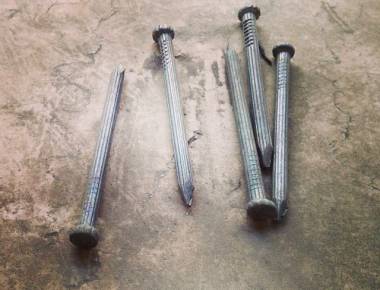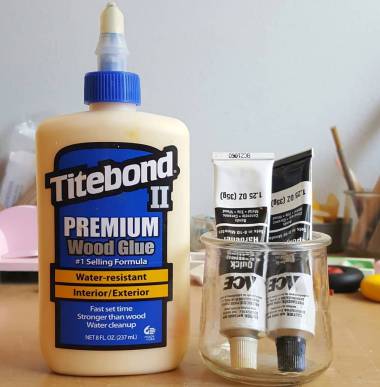Knowing how to attach wood to concrete without drilling holes in the concrete can be an essential part of making a project work. This is a beneficial skill to learn and can apply to large projects such as a deck or gazebo or to small projects like a dog house or an arbor.
Concrete is durable and can be a valuable part of a structure to work with if you only know how to use it properly. Even if you wouldn’t mind drilling holes into your concrete, ordinary tools that you use on the wood are not cut out for working on concrete.
Even without using a drill, you will still need to get some specific tools that can handle working with concrete depending on the method you choose.
Different methods to attach wood to concrete
If you are willing to make holes in the concrete but do not want to buy the particular drill bit needed, then the simplest solution is to get nails for your project.

Concrete nails
Standard nails will not work on concrete, but some nails are made specifically for nailing wood to concrete. Cut nails will also work for this as well.

Cut nails
To do this, you will need a sledgehammer and a nail that will go almost an inch into the concrete. However, you should be aware that nails are very hard to pound into concrete. This is because boards tend to “bounce” as you try to nail them. They can also come loose over time, especially when there is any movement on the part of the wood.
When using this method to attach wood to concrete, you should do your best to hit the nail straight down and not at any angles. The reason for using a sledgehammer instead of even a regular heavy-duty hammer is because the concrete nails are most often made from steel.
Since most hammers are made with steel-hardened tips, this can potentially cause sparks or even small shards of the nail to fly when you strike.
Air-powered nail guns can do this quickly and easily but can be dangerous if you are unaccustomed to using them. Before you decide to go with this route, you should first check the concrete. Some kinds of concrete are too brittle for the high power of a nail gun and will crack if you use one on it.
Another option is to use epoxy glue which is made explicitly for wood-to-concrete applications, or you can use a type of construction adhesive.

Epoxy glue
To use this method, you must first make sure that both the wood and the concrete are clean and dry or else they will not bond properly. Once glued, you will need to have some brace or clamp to keep it in place until it has dried completely.
If possible is an excellent idea to combine both of these methods. If you are doing this, then first apply the adhesive and then nail the wood into place. The glue will help keep the board from bouncing as much as you nail it in, while the nail will keep it firmly in place while it dries and will hold it longer than a nail would alone.
Problems that can occur when trying to attach wood to concrete without drilling
If you are going with the nailing route, then one problem that can happen is that you can cause cracks to form in the concrete. This problem can in part be caused by hitting the nail at a wrong angle or trying to nail into the concrete at an angle. More likely, however, is that you are not hitting the nail down hard enough.
This is why it can be a good idea to have an air-powered nail gun since it will shoot the nail in quickly and with much fewer chances of making the concrete crack. However, if it is too high-powered, then it will be just as likely to cause cracking as the other.
If there is a slight curvature of the board that it is quite possible that adhesive will not stick and that the board will come off. To remedy this, you can try one of two things.
Either you can use a better adhesive that is made for bonding concrete to wood, or you can cut the wood into fragments and then glue it. This last option is excellent if the problem is that the weight of the board is pulling it out of place before it has a chance to thoroughly dry.
- Using Borax in the Dishwasher - May 27, 2020
- Towel Ring Height and Other Fixtures: Proper Measurements - May 1, 2020
- Homemade Paint Removers for Every Surface - April 27, 2020
